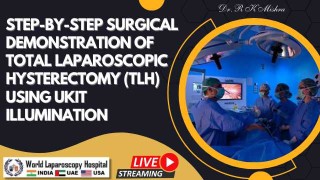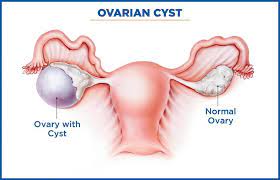Single-Port Triple Surgery: Cholecystectomy, Ovarian Cystectomy & Appendectomy
Add to
Share
48 views
Report
4 days ago
Description
Performing multiple surgical procedures in a single operative session has become one of the most remarkable advancements in minimally invasive surgery. The concept of Triple Procedure Through the Same Port, involving Laparoscopic Cholecystectomy, Ovarian Cystectomy, and Appendectomy, exemplifies the efficiency and precision of modern laparoscopy. This innovative approach minimizes surgical trauma, reduces recovery time, and enhances patient outcomes — all while addressing multiple pathologies in a single anesthesia event. Introduction Traditionally, patients presenting with more than one abdominal pathology — such as gallstones, an ovarian cyst, and chronic appendicitis — required separate surgeries, each demanding individual incisions, anesthesia, and hospital stays. With the evolution of advanced laparoscopic techniques, it has become possible to perform three distinct operations through the same port access, offering a safe, effective, and patient-friendly solution. This Triple Procedure is particularly beneficial in female patients where coexisting abdominal conditions are not uncommon. It allows comprehensive treatment with minimal invasion, reduced pain, and excellent cosmetic results. Surgical Overview 1. Laparoscopic Cholecystectomy The first step involves the removal of the gallbladder, typically affected by gallstones or chronic cholecystitis. Using the same port access, the surgeon carefully dissects Calot’s triangle, clips the cystic duct and artery, and extracts the gallbladder through the umbilical port. Advanced energy devices and precise visualization ensure safe and complete removal. 2. Ovarian Cystectomy Next, the scope is directed towards the pelvic cavity. The ovarian cyst is identified, and meticulous dissection is carried out to enucleate the cyst while preserving healthy ovarian tissue. Hemostasis is achieved using bipolar cautery or advanced sealing devices, and the cystic wall is retrieved through the same access port. 3. Appendectomy Finally, the appendix is mobilized and resected using a similar laparoscopic technique. The mesoappendix is sealed and divided, and the appendix is extracted safely. This completes the triple procedure, all through the same laparoscopic entry points, ensuring minimal disturbance to the abdominal wall. Advantages of the Triple Procedure Single Port Access: Reduces the number of incisions, minimizing postoperative pain and scarring. Shorter Hospital Stay: Patients can be discharged earlier due to faster recovery. Cost-Effective: Combines three surgeries into one, reducing anesthesia and hospital expenses. Comprehensive Treatment: Simultaneously addresses multiple pathologies in one sitting. Superior Cosmetic Outcome: Only one or two small incisions are visible, preserving the aesthetic appearance of the abdomen. Safety and Feasibility The success of this combined approach depends on the surgeon’s expertise and careful patient selection. At centers like World Laparoscopy Hospital, where advanced minimally invasive techniques are routinely performed, such complex multi-procedural surgeries have shown excellent safety profiles and outcomes. Proper intraoperative planning, sterilization, and use of energy devices are key to avoiding complications. Postoperative Recovery Patients typically experience minimal pain and rapid recovery. Oral intake can begin within hours after surgery, and most patients resume normal activities within a few days. Postoperative follow-up confirms faster wound healing and minimal risk of infection or adhesions. Conclusion The Triple Procedure Through the Same Port — combining Laparoscopic Cholecystectomy, Ovarian Cystectomy, and Appendectomy — represents a milestone in the evolution of minimally invasive surgery. It is a testament to how far surgical innovation has progressed, offering patients safer, faster, and more efficient care. With growing expertise in laparoscopy, such comprehensive procedures are becoming a standard of excellence in modern surgical practice.
Similar Videos






